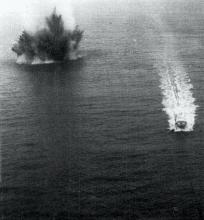Listen to today's episode of StarDate on the web the same day it airs in high-quality streaming audio without any extra ads or announcements. Choose a $8 one-month pass, or listen every day for a year for just $30.
You are here
Setting Sail
In centuries past, an expedition to view a rare astronomical event could take years, and there was no guarantee that everyone would make it back alive.
Consider the expedition of the Endeavour. The ship left Plymouth, England, 250 years ago today. Her destination was Tahiti, to observe a transit of Venus across the face of the Sun.
Endeavour was commanded by James Cook, an experienced sailor and mapmaker. The ship carried 94 men, including Charles Green, the assistant to England’s astronomer royal.
Endeavour arrived in Tahiti in April of 1769. The crew set up an observing site, known as Fort Venus. Green, Cook, and other scientists observed the transit with telescopes and other instruments.
Astronomers hoped the transit would help them measure the distance from Earth to the Sun, which would allow them to map the solar system. In addition, the Royal Society hoped to get measurements that would help sailors determine their longitude.
When the transit was done, Endeavour continued exploring. It ventured to New Zealand, where Cook made the first map of its coastline. And it explored the east coast of Australia.
Endeavour then journeyed to the East Indies for repairs and supplies. Most members of the crew contracted malaria or other diseases there. About 30 of them died, including Green. The survivors sailed around Africa, then returned to England in 1771 — completing a journey of exploration that took them around the globe.
Script by Damond Benningfield





